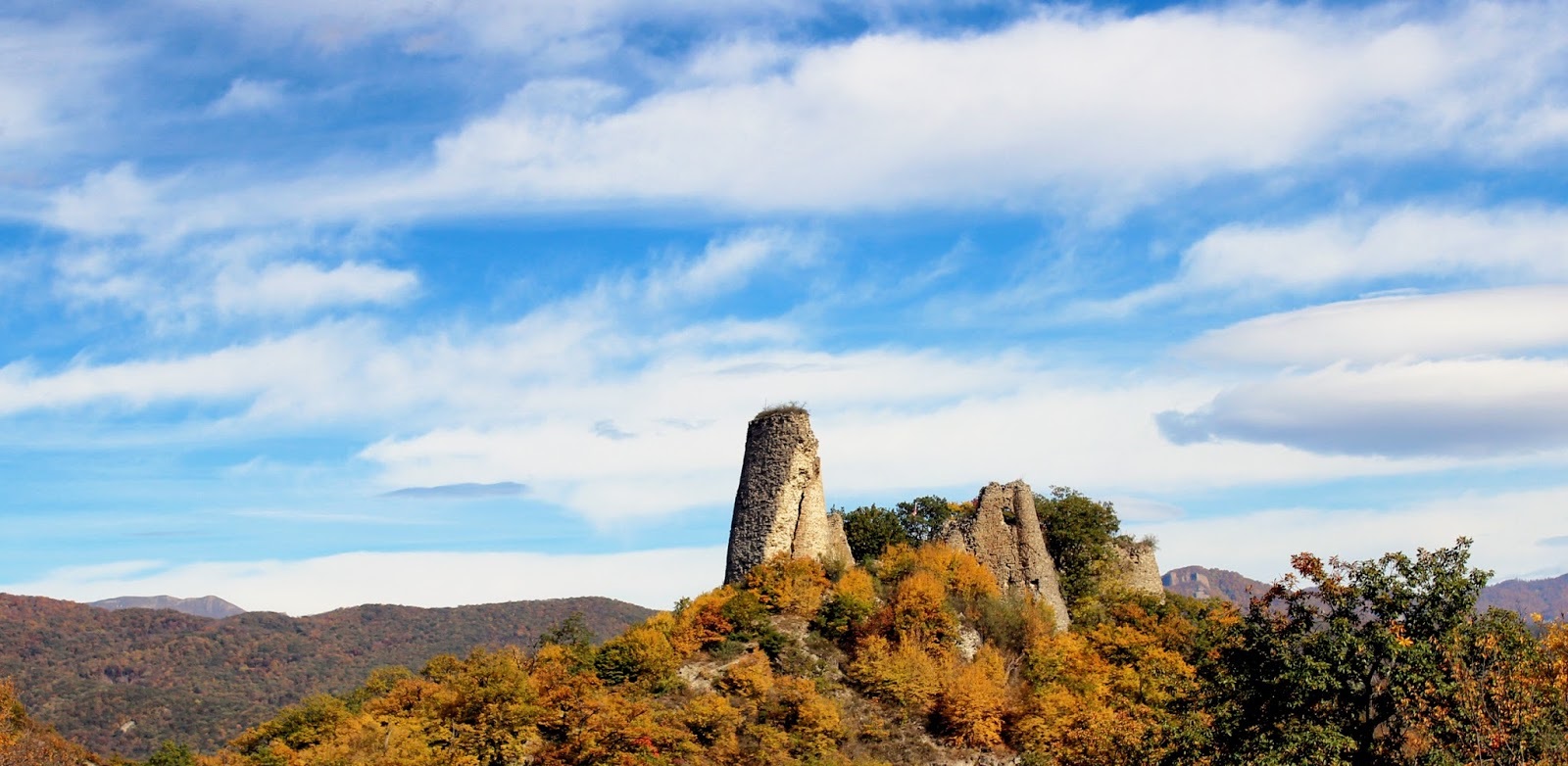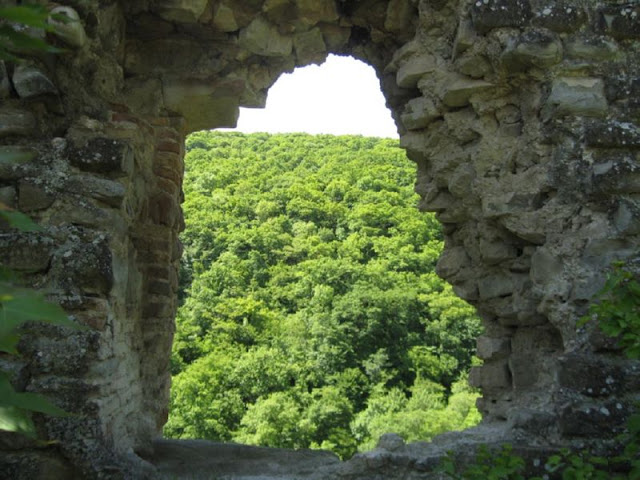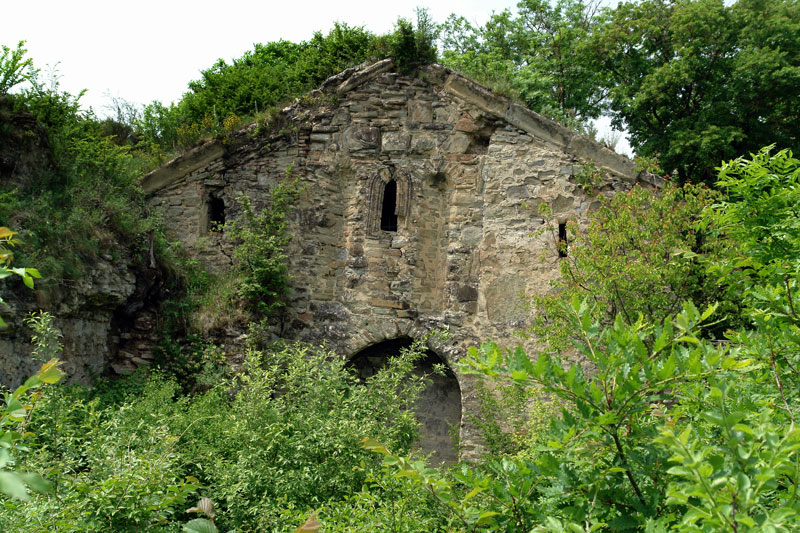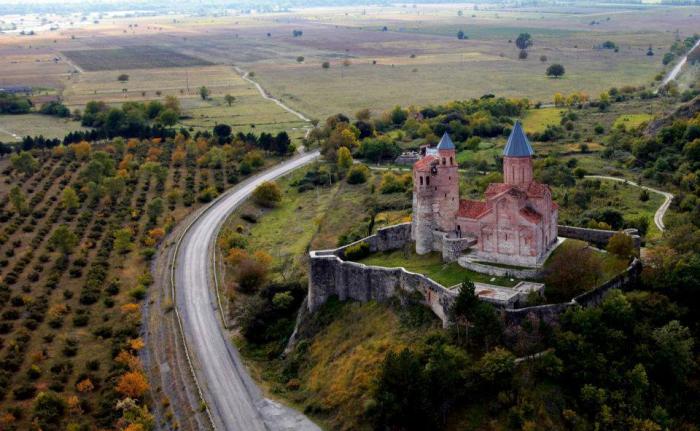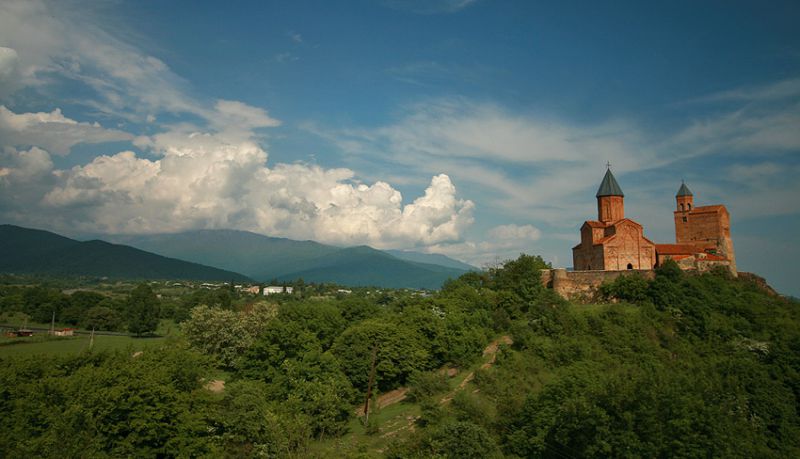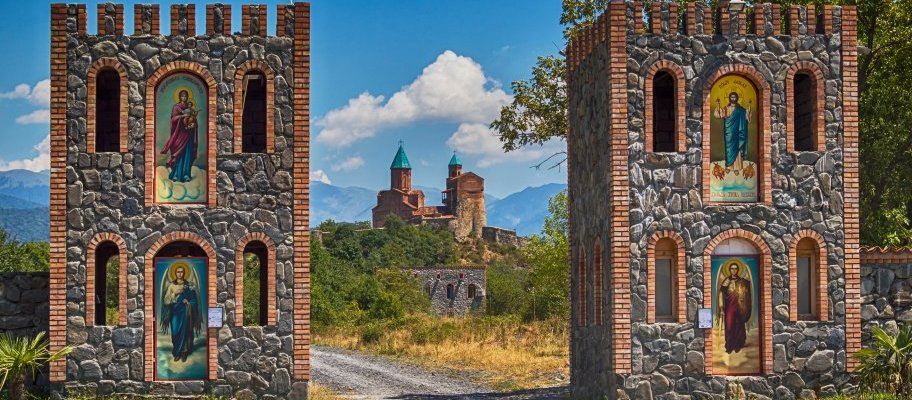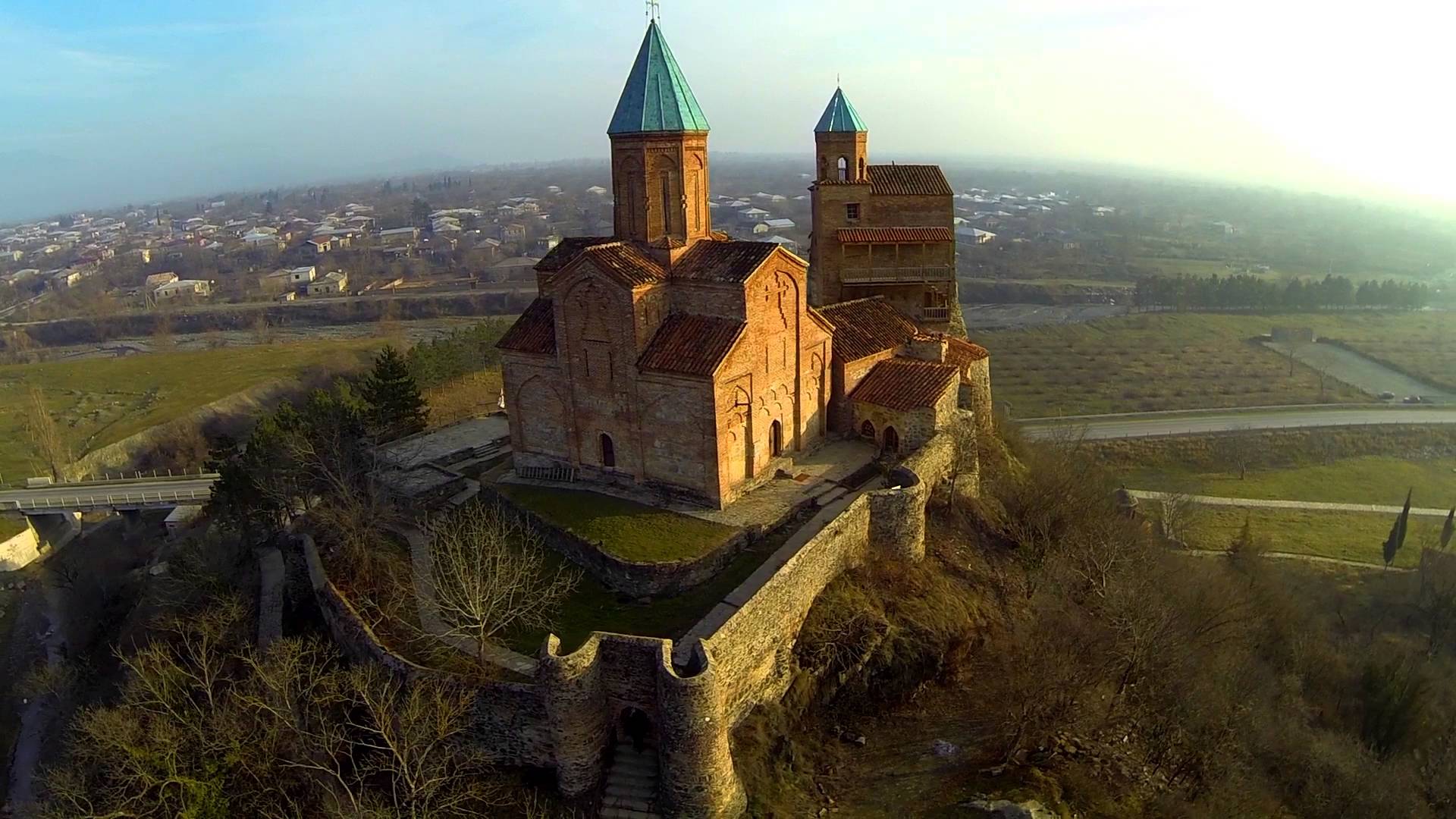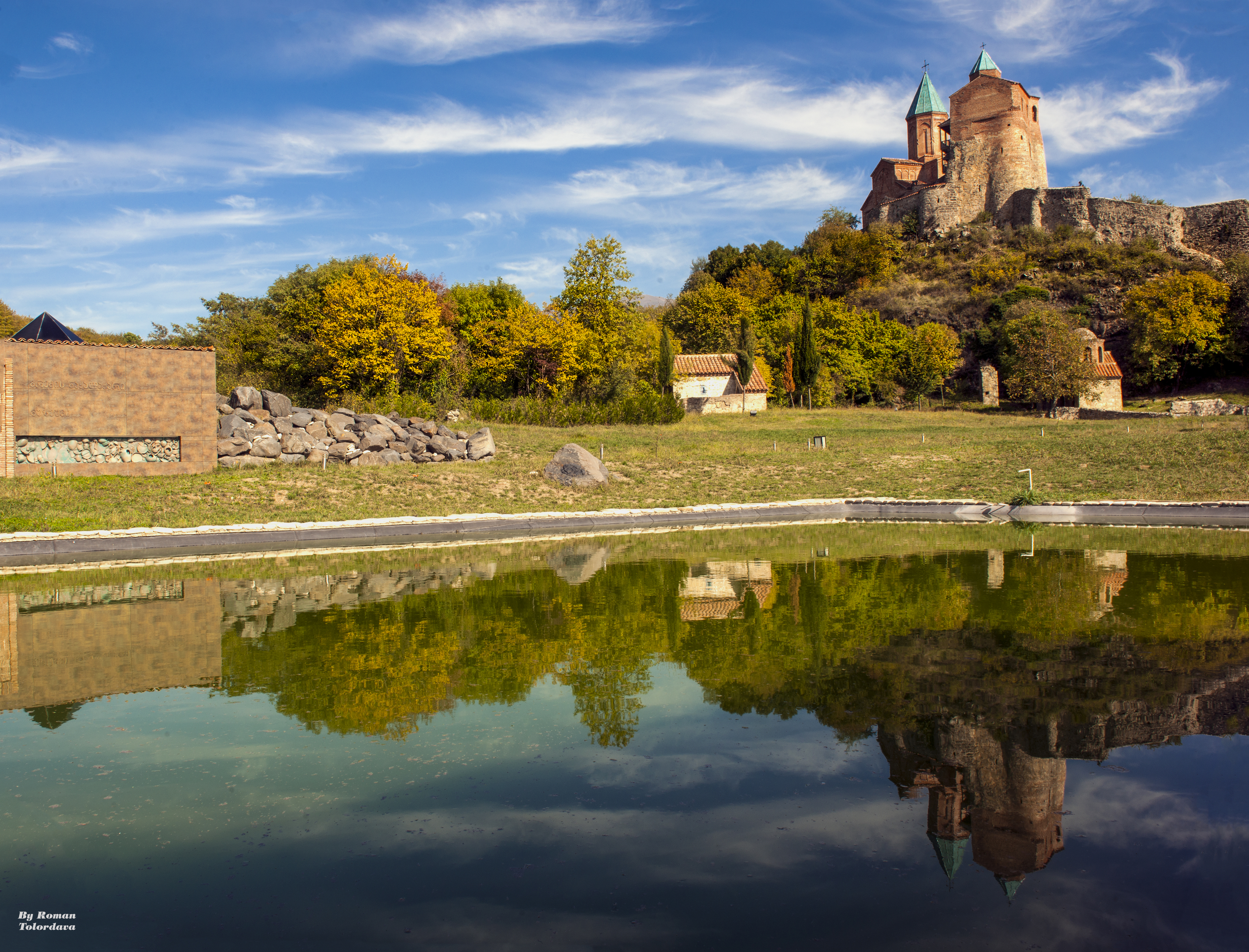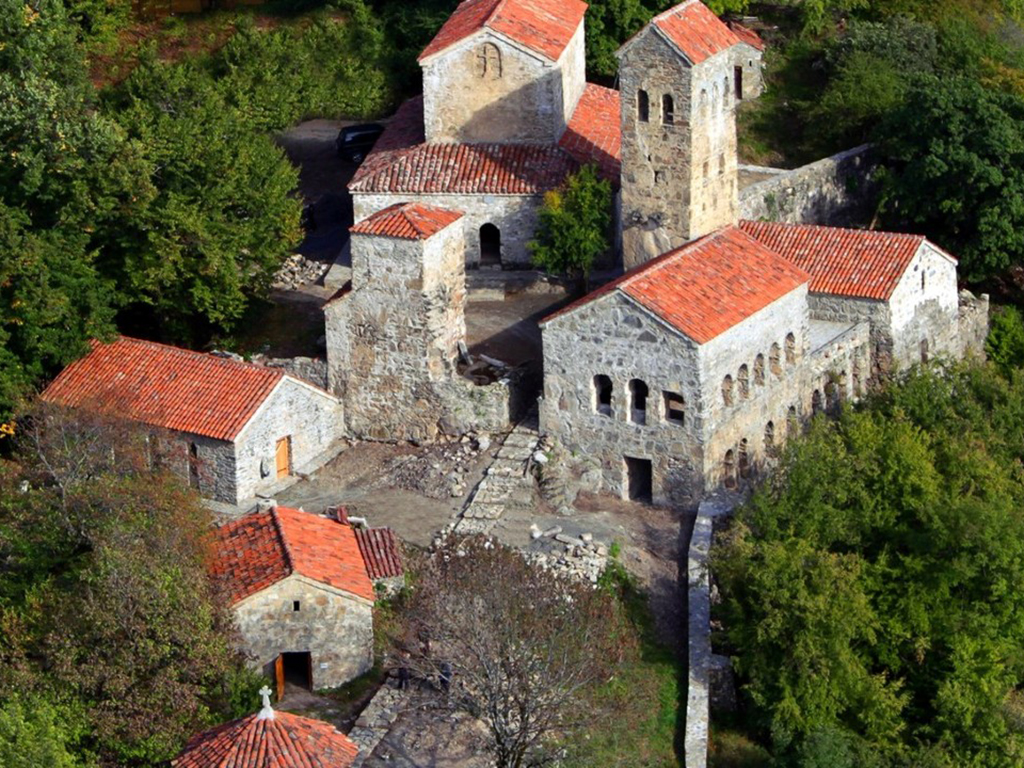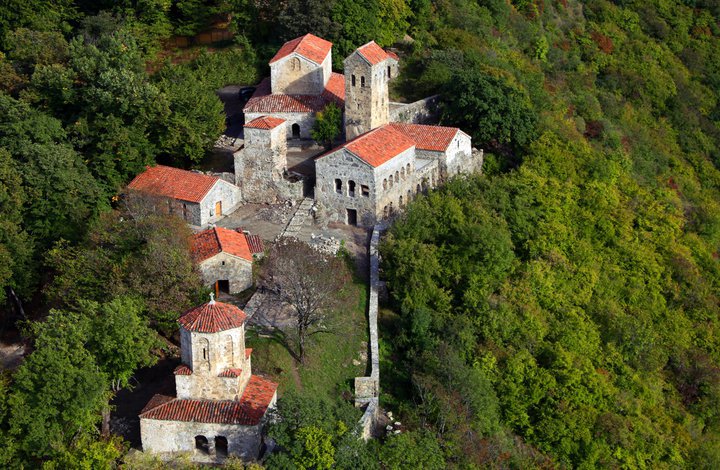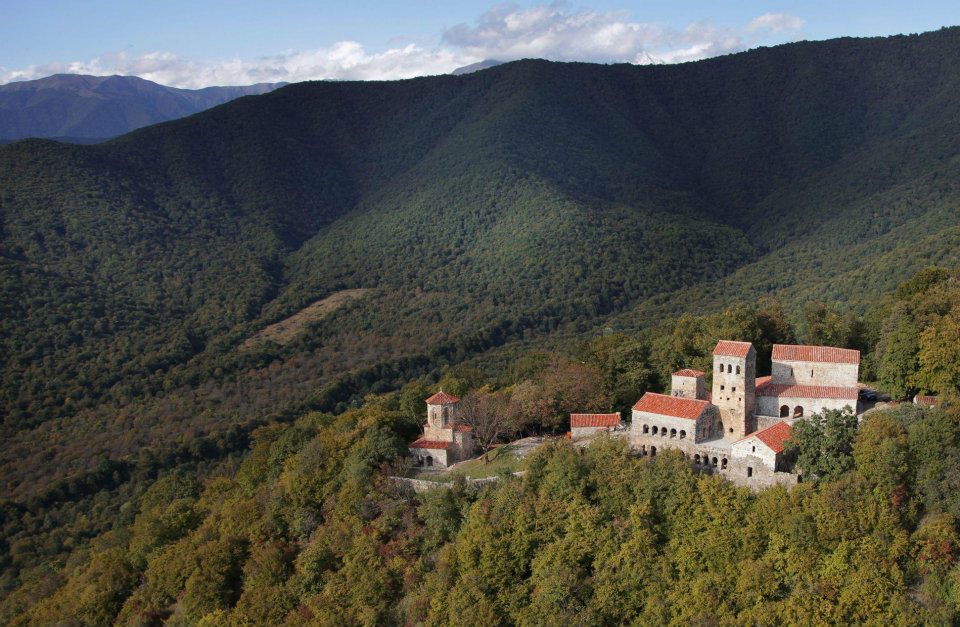TBILISI – UJARMA FORTRESS – GOMBORI PASS – SHAUMTA MONASTERY – GREMI – NEKRESI MONASTERY – KVARELI – KINDZMARAULI WINERY – TBILISI
UJARMA FORTRESSshow galleryhide gallery
City-fortress Ujarma is situated on the right bank of the river Iori, in 45 km to the east of Tbilisi on Gombory Range. Three main periods of construction are defined. In the second half of the 5th century, famous Vakhtang Gorgasal ‘erected numerous buildings in Ujarma’ and moved his residence there. After Vakhtang’s death, his heir Dachi was ruling Kakheti for some period from here. In the 10th century Ujarma was destroyed by Arabian forces of Abul Kassim. In the 13th century, the fortress was restored by King George III, where he arranged treasury.
City-fortress consists of two parts: citadel, located on the plateau of the rocky hill and city on the slope.
City was surrounded by the powerful protective wall with nine quadrangular towers. The towers are three-storied, covered by tiled roof with loop-holes. City gates were in the first tower.
A royal palace – two-storied building with a vault – was located in the eastern part of citadel. Premises were illuminated by big and broad windows and they had hanging balconies.
In the middle part of the citadel was ancient church ‘Jvar-Patiosani’ (Church of the Fair Cross). There were dwelling outhouses opposite the church and big reservoirs to keep water.
The whole main system of protection was established in the epoch of Vakhtang Gorgasal. Ujarma is referred to the best samples of fortification constructions of the ancient Georgia.
In the second period (12th century) the destroyed walls were restored and new fortifications and dwelling places were constructed.
The third period (17th – 18th cc) was represented restoration of destroyed parts of the citadel’s walls.
GREMIshow galleryhide gallery
Gremi is a 16th-century architectural monument – the royal citadel and the Church of the Archangels – in Kakheti, Georgia. The complex is what has survived from the once flourishing town of Gremi and is located southwest of the present-day village of the same name in the Kvareli district, 175 kilometers east of Tbilisi, capital of Georgia.
Gremi was the capital of the Kingdom of Kakheti in the 16th and 17th centuries. Founded by Levan of Kakheti, it functioned as a lively trading town on the Silk Road and royal residence until being razed to the ground by the armies of Shah Abbas I of Persia in 1615. The town never regained its past prosperity and the kings of Kakheti transferred their capital to Telavi in the mid-17th century. There was big Armenian population. The Russian diplomat Fedor Volkonsky, who was here in the 17th century, said: “Armenians have own church and market behind one was other church”. He also said about 10 Armenian churches near the palace of king
The town appears to have occupied the area of approximately 40 hectares and to have been composed of three principal parts – the Archangels’ Church complex, the royal residence and the commercial neighborhood. Systematic archaeological studies of the area guided by A. Mamulashvili and P. Zak’araia were carried out in 1939-1949 and 1963-1967, respectively. Since 2007, the monuments of Gremi have been proposed for inclusion into the UNESCO World Heritage Sites.
NEKRESI MONASTERYshow galleryhide gallery
Nekresi is a historic town in Kakheti, Georgia, in modern-day Kvareli Municipality, near the village of Shilda. The town was established by king Pharnajom (around 2nd-1st centuries BC). In the 4th century AD, king Thrdat built a church in this place. This church became a refuge to one of the Assyrian fathers, Abibus, in the late 6th century. Around this time Diocese of Nekresi was established, which existed until the 19th century.
The church was recently restored, stone masonry repaired, roof rebuilt, windows put in place.

